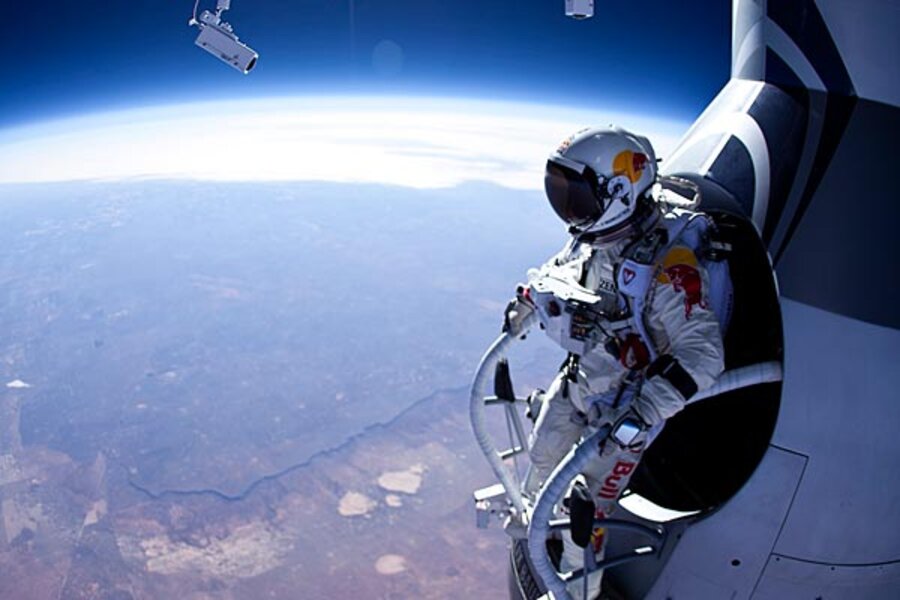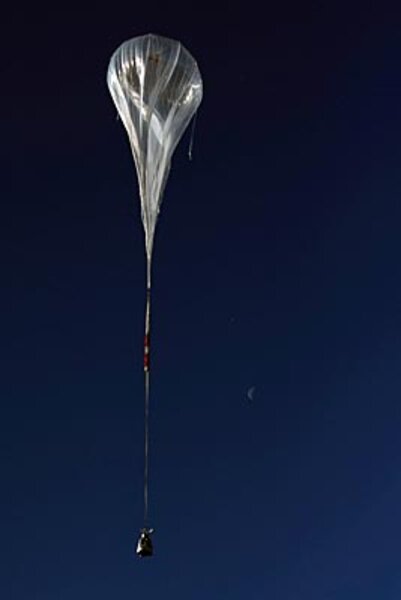Sky diver, after free-falling 13 miles, sets sights on record 23-mile jump
Loading...
Felix Baumgartner calls it the ultimate sky dive, and he's more than halfway there.
The Austrian-born parachute jumper successfully landed after a free-fall jump from 13 miles above Roswell, N.M., on Thursday. The feat is the first of a pair of test jumps en route to a free-fall jump from 23 miles above Earth's surface, during which Mr. Baumgartner would break the sound barrier as he plunges. The jump for the record books is planned for later this year.
Only two other humans have safely parachuted after free falls from higher altitudes. US Air Force pilot Joseph Kittinger set a manned-balloon altitude record in 1961, then jumped from the balloon, which had reached 102,800 feet. In 1962, Russian Eugene Andreev completed a jump from 80,380 feet. Baumgartner's plunge on Thursday came at 71,581 feet.
The test was designed to take Baumgartner into a region above the Armstrong line, an altitude of between 62,000 and 63,500 feet named for a former US Air Force flight surgeon-general who is widely considered the father of space medicine. The Armstrong limit is the highest altitude a human can reach and survive outside a pressurized environment – either a cabin or suit. At that altitude, the atmosphere's pressure is so low that water boils away at a human's body temperature. Outside temperatures hover around minus 75 degrees Fahrenheit.
A space-suited Baumgartner rode to his jump altitude in a pressurized capsule that dangled below a 165-foot-tall helium balloon.
The ascent went flawlessly, according to the project's sponsors, Red Bull USA, an energy drink producer. During Baumgartner's 3-minute, 33-second free-fall, he reached a speed of 364.4 miles an hour. He opened his parachute when he was just under 8,000 feet above the New Mexico desert.
One unanticipated aspect of the jump, he acknowledged, was a need to get used to the amount of time the free fall takes. “I wanted to open the parachute after descending awhile,” he said in a prepared statement. “But I noticed I was still at an altitude of 50,000 feet.”
In addition, the team needs to figure out a better way to keep his hands warm.
“I could hardly move my hands” because of the cold, Baumgartner said. “We're going to have to do some work on that.”
Once Baumgartner had left the capsule, small explosive charges detonated to cut the capsule free from the balloon. The capsule deployed its own parachute for a damage-free return.
The next test jump aims to reach 90,000 feet – three times the altitude at which commercial airliners travel – before Baumgartner takes the plunge.
When the run for the record takes place sometime this summer, Baumgartner reportedly will free fall from 120,000 feet for about 5-1/2 minutes and hit a top speed of 690 miles an hour, breaking the sound barrier. The descent overall is expected to take up to 20 minutes.
Get daily or weekly updates from CSMonitor.com delivered to your inbox. Sign up today.








